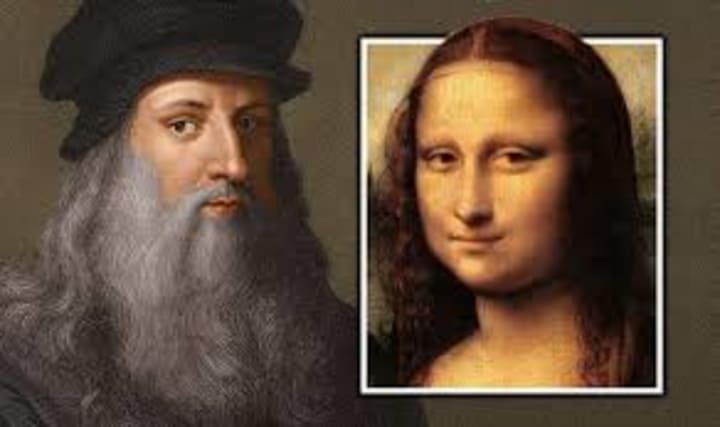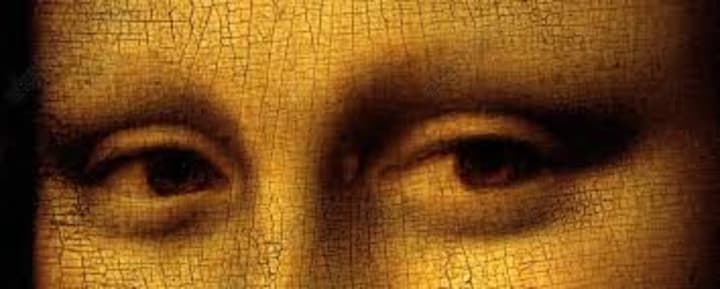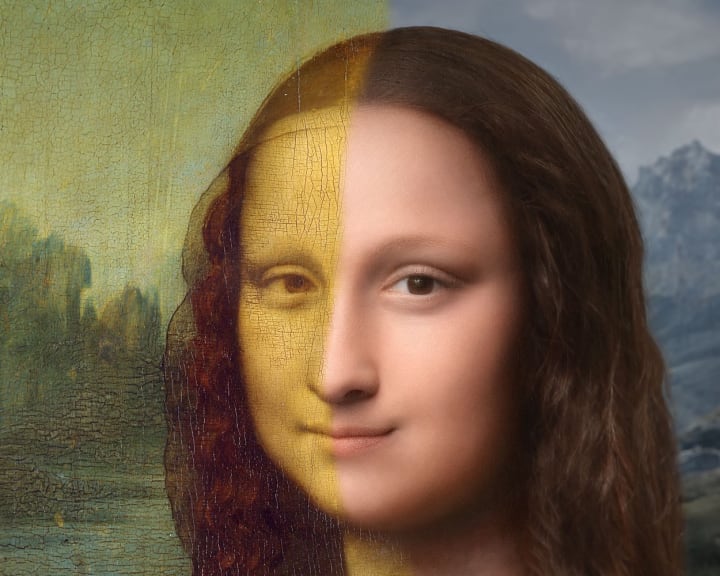
The Mona Lisa, a piece done by da Vinci, has mystified and entranced viewers for centuries. What exactly is it that’s so emotionally jarring about this portrait, and what mysteries lie within it?
Historians believe that the Mona (meaning Madonna- a term of respect) Lisa was a portrait of Lisa di Antonio Maria Gherardini, the wife of Florentine silk merchant Francesco del Giocondo. Though this has been accepted by most historians, weather it was a commission or not is still much up for debate.

Da Vinci's dedication to this painting spanned 10 long years, traveling with him wherever he'd find work and inspiration. The canvas was made out of a *poplar wood panel and painted with oil paints. It was a mere 2 foot 6 inches by 1 foot 9 inches. This would of made for easy travel, and greater attention to detail.
*Poplar- a tall, fast-growing tree of north temperate regions, widely grown in shelter belts and for timber and pulp.
It's difficult to think that such a treasured piece was not for a large commission, but the Gherardini Giocondo family never went looking for it. So the truth behind the painting is still shadowed in mystery. But whatever the reason, this would become Da Vinci's most hauntingly beautiful masterpiece.

He even brought it with him to France, which would become the country he'd parish in.

Upon his death in 1519, the Mona Lisa landed in the hands of many including a King, Napoleon, and many other prominent figures in history- before finding its way to it’s current home in France, the Louvre art museum. The painting embodies many of the qualities of the High Renaissance era/ style, which is part of the reason why its such an important and famous painting.

Perhaps what makes the painting so alluring are the complexities within her face. She seems somewhat stoic, yet contemplative. There is life behind her eyes, unlike many of the other paintings of the same era- especially in the French region, where a somewhat detached feeling was used in paintings at the time.

One thing I noted is her lack of eyebrows. Perhaps this is the reason we can't exactly tell her expression and to why it seems almost eerie. There are lots of emotions that cannot be properly conveyed on a face without eyebrows. The exclusion of eyebrows also gives her a kinder face, making it very round. Of course, she originally did have eyebrows, but over time of restorations, they were all but obliterated in a freak accident of mis-used of chemicals.
There are even art restoration specialists who have recently been able to find the 'true' portrait underneath the layers of paint and she is, indeed, a different woman. Through the years of re-painting, Da Vinci's masterpiece had a thick layer of oil paint on it. After he passed, it was moved from place to place, and for a majority of it's 500 year existence, hadn't been kept at safe temperatures. This leads many historians to believe that the view of Mona Lisa we see today is different from it's under coat because of the subtle melting and shifting of the paint and it's many layers.

All in all, Da Vinci’s work- which included inventions, paintings, and much more- was crucial to the late 15th and early 16th century. Even today many of his works are of great importance, especially those who have yet to unveil their mysteries.
_____________________
Thank you for taking the time to read this article! If you enjoy Art History, be sure to give my Author's Page a look for more like this!
SOURCES
https://www.bbc.com/news/entertainment-arts-35031997
About the Creator
QuirkyMin
Aspiring writer, sharing articles of personal interest as well as original short stories.
https://linktr.ee/quirky.min






Comments
There are no comments for this story
Be the first to respond and start the conversation.